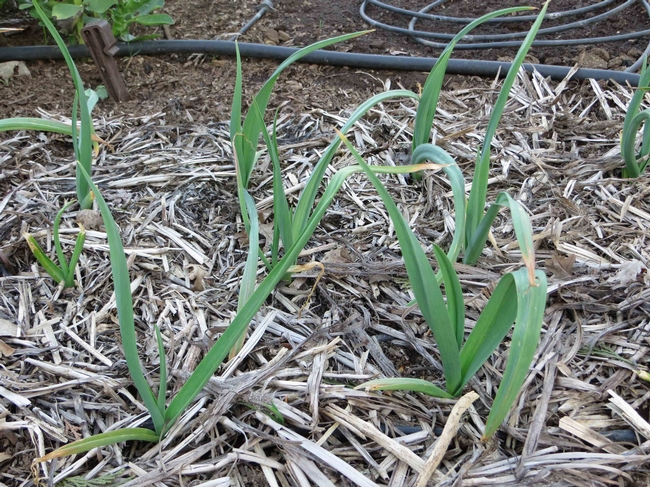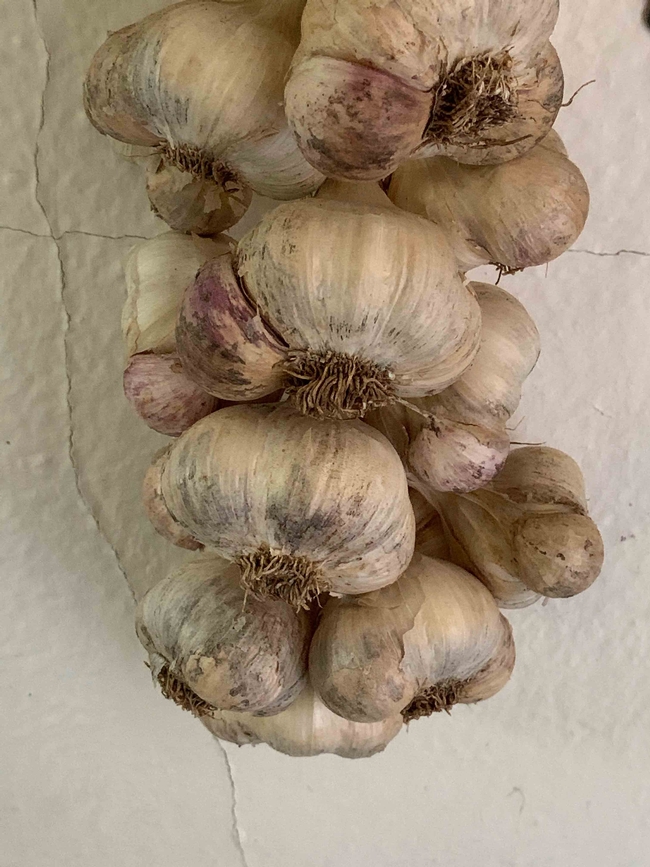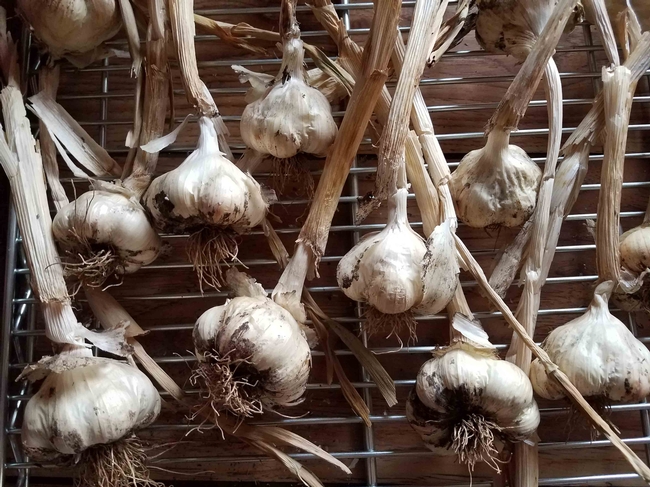Garlic is a species in the onion genus Allium, and therefore related to onions, shallots, leeks, and chives. It is flavorful, nutritious, and easy to grow.

You can purchase a variety of different ‘seed' garlic from online seed sources or catalogues. But you can also plant the garlic you have in your pantry that you may have purchased from a grocery store.
Several garlic varieties grow well in our climate. “California Early White” is a mild-tasting variety developed for the garlic industry, known as Gilroy garlic. “Susanville” is an improved selection of the “California Early.” “Chesnok Red” is a medium hardneck garlic with purple stripes. “Inchelium Red” is a softneck garlic that tastes mild at harvest time but increases in flavor during storage, gaining a touch of spicy heat.

Garlic is the last crop of the year, planted in late fall at least two weeks from first frost (mid-October through the end of November in our area). It is harvested in early summer (June or July).
As with most edible crops, it helps to prepare the soil before planting, by amending it with compost so that it is loose and rich in organic matter. Break the garlic head into individual cloves. Make sure to retain the root and the papery covering on each clove. Choose the largest cloves to plant because they will yield larger garlic bulbs. Each small clove of garlic will grow into a bulb.
Plant the cloves four to six inches apart and one to two inches deep with the root side down and the tip up. Fertilize once after planting and again in the spring when the weather is warmer; choose a fertilizer that is high in nitrogen because garlic plants are heavy feeders. Water lightly; too much water can cause the bulb to rot. Soon you should see green stems or scapes appear. A few of these can be cut off to add to soups or sautés over the winter. Beginning in May, reduce watering until the garlic tops turn yellow.
Harvesting
The garlic bulbs will be ready to harvest in June or July, depending upon the weather: heat will speed them up and cold will slow them down. When most of the stems are turning yellow and brown it is time to harvest. Gently lift the bulbs from the soil with your hands or small tools, being careful not to damage the bulbs. Avoid pulling them out by the stem because that can cause the stem to break off from the bulb.
Curing garlic
Let the harvested garlic dry intact outdoors in a warm shady place. When the outer skin of the bulb looks papery, brush off the dirt and clip the roots. Braid the stems while they are still flexible if you wish, or simply cut the stems off.
Store garlic in an area that is cool and dry. The ideal storage temperature is 55-70 degrees. Remember to set a bulb aside to plant the following fall.
Planting garlic is easy to do in your vegetable garden or in containers on your patio. You will be rewarded with the addition of the wonderful flavor that is waiting in every bulb.
UC Master Gardeners of Butte County are part of the University of California Cooperative Extension (UCCE) system. To learn more about us and our upcoming events, and for help with gardening in our area, visit our website. If you have a gardening question or problem, email the Hotline at mgbutte@ucanr.edu (preferred) or call (530) 538-7201.
